Την εμπιστευτική αλληλογραφία μεταξύ του βρετανικού και του ελληνικού υπουργείου Πολιτισμού για τα Γλυπτά του Παρθενώνα αποκαλύπτει η εφημερίδα «Τα Νέα».
Οι επιστολές, οι οποίες έρχονται για πρώτη φορά στο φως της δημοσιότητας, καταδεικνύουν ότι το Λονδίνο δεν ήταν ποτέ διατεθειμένο να προσέλθει σε διάλογο με την Αθήνα για την επανένωση των Γλυπτών. Η βρετανική κυβέρνηση επιλέγει να κρύβεται πίσω από το Βρετανικό Μουσείο, το οποίο αποκαλεί «νόμιμο ιδιοκτήτη» των αρχαιοελληνικών πολιτιστικών θησαυρών που απέσπασε βίαια ο λόρδος Ελγιν, και εμμένει στην αδιάλλακτη στάση της αρνούμενη να συζητήσει το θέμα.
Στις επιστολές που παρουσιάζουν Τα Νέα, η πιο πρόσφατη εστάλη πριν από τρεις μήνες, ο Βρετανός υπουργός Πολιτισμού απορρίπτει το αίτημα της ελληνικής κυβέρνησης να αρχίσει διάλογος για την επιστροφή των Γλυπτών και παραπέμπει στο Βρετανικό Μουσείο για οποιαδήποτε συζήτηση: όχι, όμως, για την οριστική επανένωσή τους, αλλά μόνο για να εξεταστεί το ενδεχόμενο του δανεισμού τους, υπό την προϋπόθεση ότι η Ελλάδα θα παραιτηθεί της διεκδίκησής τους.
Οι επιστολές
Στις 10 Αυγούστου 2018, η τότε υπουργός Πολιτισμού Λυδία Κονιόρδου έστειλε επιστολή στον Bρετανό ομόλογο της Τζέρεμι Ράιτ με την οποία του ζητούσε να προσέλθει σε διάλογο για την επανένωση των Γλυπτών σε διακρατικό επίπεδο, επικαλούμενη πρόσφατη σύσταση επιτροπής της UNESCO για την εντατικοποίηση των προσπαθειών με στόχο την επίτευξη ικανοποιητικής λύσης στο ζήτημα. Συγκεκριμένα, η κυρία Κονιόρδου πρότεινε να πραγματοποιηθεί διμερής συνάντηση εμπειρογνωμόνων στην Αθήνα τον Οκτώβριο ή τον Νοέμβριο του 2018.
Η απάντηση της βρετανικής κυβέρνησης ήρθε τέσσερις ολόκληρους μήνες αργότερα, στις 3 Δεκεμβρίου 2018. Εν τω μεταξύ, είχε αλλάξει η ηγεσία στο ελληνικό υπουργείο Πολιτισμού και, ασφαλώς, είχε παρέλθει η προτεινόμενη ημερομηνία έναρξης του διαλόγου. Την Κονιόρδου διαδέχθηκε η Μυρσίνη Ζορμπά, στην οποία απευθύνεται η επιστολή του Βρετανού υπουργού. Στην επιστολή αυτή απορρίπτεται το ελληνικό αίτημα, καθώς η βρετανική κυβέρνηση δηλώνει... αναρμόδια.
«Η κυβέρνηση της Αυτής Μεγαλειότητας ήταν ανέκαθεν πρόθυμη να συζητήσει αυτό το θέμα με την Ελλάδα σε διακυβερνητικό επίπεδο, στον βαθμό που αυτό είναι αρμόζον», επισημαίνει ο Ράιτ. Κατά τους Βρετανούς το αίτημα για οριστική επιστροφή των Γλυπτών δεν είναι «αρμόζον», συνεπώς αποκλείεται οποιαδήποτε συζήτηση επ' αυτού.
«Όπως είναι πασίγνωστο», συνεχίζει ο Βρετανός υπουργός, «τα Γλυπτά του Παρθενώνα (σ.σ. που βρίσκονται) στο Λονδίνο είναι υπό την ιδιοκτησία και τη νομική ευθύνη των Επιτρόπων (Trustees) του Βρετανικού Μουσείου, το οποίο λειτουργεί ανεξάρτητα από την κυβέρνηση, και βρίσκονται σε μόνιμη δημόσια έκθεση, σε προβεβλημένη θέση στο Μουσείο, εδώ και 200 χρόνια. Αυτό αναφέρθηκε με σαφήνεια όταν η υπουργός Κονιόρδου συναντήθηκε με τον προκάτοχό μου στο Λονδίνο το καλοκαίρι».





















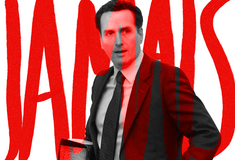




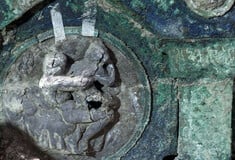
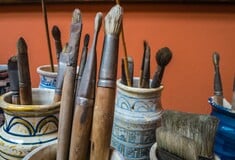
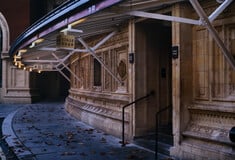
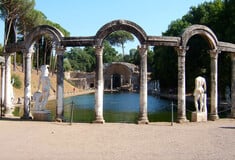
σχόλια